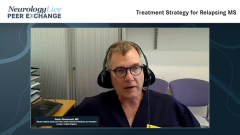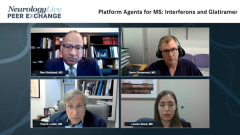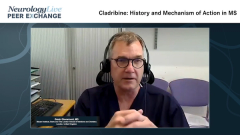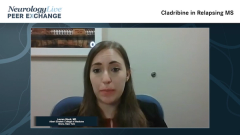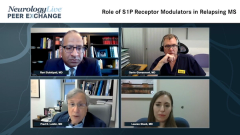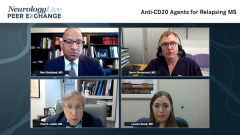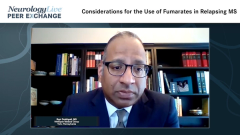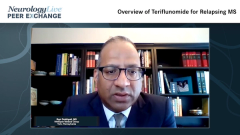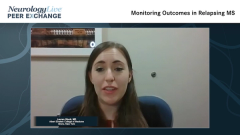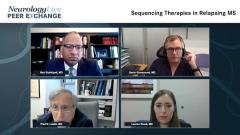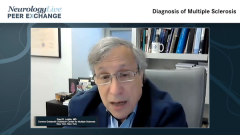
The Diagnosis of Multiple Sclerosis
Fred D. Lublin, MD discusses the diagnosis of multiple sclerosis and the 2017 revisions of the McDonald criteria.
Episodes in this series

Fred D. Lublin, MD: Hello, and welcome to this Neurology Live® Peer Exchange titled “Optimal Management of Relapsing Multiple Sclerosis.” I’m Dr Fred Lublin from the Corinne Goldsmith Dickinson Center for Multiple Sclerosis at Mount Sinai Medical Center in New York, New York. Joining me in this discussion are my colleagues Dr Ravi Dukkipati, a neurologist from WellSpan Medical Group in York, Pennsylvania; Dr Gavin Giovannoni, a professor and the chair of neurology at the Blizard Institute, Barts and The London School of Medicine and Dentistry in London, United Kingdom; and Dr Lauren Gluck, the director of the Montefiore Multiple Sclerosis Center and an assistant professor at Albert Einstein College of Medicine in the Bronx, New York. Today we’re going to discuss a number of topics pertaining to the diagnosis and treatment of relapsing multiple sclerosis [MS].
Let me get started with our first topic: diagnosis of multiple sclerosis and the 2017 McDonald Criteria for the Diagnosis of Multiple Sclerosis. McDonald 2017 was the fourth iteration of the diagnostic guidelines for multiple sclerosis. It made 4 changes to what we’ve been doing previously. No. 1, it allowed usage of both symptomatic and asymptomatic lesions in terms of the MRI lesion count. It included cortical, as well as juxtacortical, lesions as 1 of 4 critical areas for MS lesions on the MRI. Without the use of spinal fluid, oligoclonal bands in place of dissemination in time would not be possible—it’s not a surrogate, it’s in place of dissemination in time. This suggested that, in addition to diagnosing MS at the time of diagnosis, you should also phenotype it, whether it’s relapsing or remitting, a clinically isolated syndrome, secondary progressive or primary progressive MS.
Importantly, in McDonald 2017, there was a discussion about misdiagnosis of MS. This has been an issue and has been covered in a number of publications. The major concern, of course, is that people are being misdiagnosed and then treated with agents that aren’t necessarily going to do them any good if the diagnosis isn’t correct. One of the important issues was that many of the misdiagnoses were based on misreading the MRI scan. Two important principles for McDonald are, No. 1, it has to be a typical, clinically isolated syndrome that you’re evaluating at the beginning. This includes optic neuritis, inflammatory brainstem cerebellar syndrome, or a partial myelitis. Any other neurological presentation—but may be the case in MS—doesn’t adhere to the statistics of McDonald. The accuracy of the criteria is dependent on using classical clinically isolated syndrome.
The second common cause of error is misreading the MRI. McDonald is based on strict interpretation of the MRI. Cortical lesions or juxtacortical lesions must be involved in the cortex, or at least touch the cortex, and periventricular radial lesions [Dawson fingers] have to touch the ventricular system. That doesn’t mean that lesions with MS don’t occur in other areas. It means that the diagnostic criteria, employed in McDonald 2017, hold for those specific instances. Those are the important things to remember. Another important aspect of McDonald 2017, and also McDonald 2010, was liberalizing the criteria for dissemination in time or doing away with it by including CSF [cerebrospinal fluid] and oligoclonal bands. About 25% of what would have stayed misdiagnosed as clinically isolated syndrome now became multiple sclerosis. We’re making the diagnosis earlier and earlier, which—as you’ll see when we get into the discussion of treatment—is important because the earlier we treat, the better people do. But it also increases the risk of misdiagnosis. One should always keep an open mind, moving forward, as to whether the diagnosis is correct or incorrect.
Thank you all for watching this Neurology Live® Peer Exchange. If you enjoyed the content, please subscribe to our e-newsletters to receive upcoming Peer Exchanges and other great content right in your in-box. Thank you for joining us.
Transcript Edited for Clarity
Newsletter
Keep your finger on the pulse of neurology—subscribe to NeurologyLive for expert interviews, new data, and breakthrough treatment updates.

